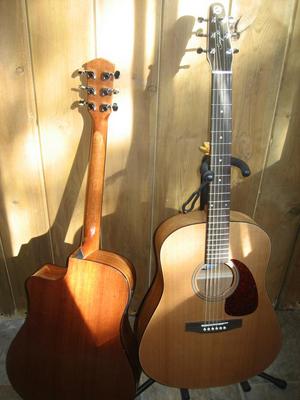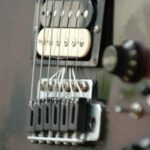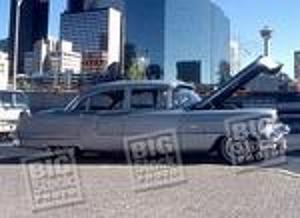Simplicity. That’s the point of an acoustic guitar, isn’t it? Compared to the alchemy involved in choosing an electric guitar, amplifier, effects, and various other components, an acoustic guitar seems pretty straight-up. Still, variables can multiply exponentially on an instrument where small differences are a big deal. Woods/materials, body types, place of manufacture and, of course, price. Here we’ll cover the basics of selecting an acoustic guitar; whether you’re a veteran electric player crossing over to the more au naturel side of things, an experienced acoustic guitarist in search for a “beater” you can abuse with less guilt than your Lowden or Taylor, or even someone who’s never held a guitar in your life.
First lets cover woods. In the sub $500 range, which is what this article considers the beginner range and thus covers, virtually every guitar will come with laminate back and sides. This means that rather than solid wood, your guitar is made of a collaboration of wood and wood-…ish materials. Solid topwoods are desirable and most luthiers will agree that the primary tonal qualities of a guitar come from the top of the guitar.
How much of a role do the back and sides play? Well, I’ll put it this way. The top is the center of resonance on an acoustic guitar other than the strings themselves. The back and sides function as a type of amplification for this original resonance. In that sense, it’s like playing a sound through a pair of speakers. The top and strings and various other factors (foremost the player) determine the sound, and the matter of back and sides is comparable to the subtle flavor a pair of speakers may paint sound with.
If solid wood back and sides are important to you, your price range will quickly jump to at the very least $600 for a new instrument. Common back/sides materials are mahogany and sapele, which are balanced and warm sounding, rosewood, which is throaty and dark sounding, and maple, which is crisp and bright sounding. One advantage to laminate back/sides is that they’re less sensitive to humidity than solid wood is, so storage isn’t as much of a science project.
When it comes to topwoods, solid is a bigger deal, and the most common flavors are solid spruce and solid cedar. Solid mahogany comes in a distant third.
Chances are if you’ve heard an acoustic guitar, you’ve heard a spruce top. There are many sub-types of spruce, however generally the tonal differences are minor, and sub-$500 guitars don’t delve that deeply into descriptiveness. Finding out the exact sub-species may be difficult to impossible. Good spruce has a bright, powerful, crisp sound and is light golden to nearly white in appearance, generally darkening significantly with age. Cedar is famous for its delicate responsiveness at quiet volumes, tonally more mellow and vocal than spruce and generally light brown-beige with a rosy or tea-colored tint in appearance. Some cedar guitars, however, can lose definition slightly when played “hard”. Mahogany-topped guitars are rare in comparison but still widely available, delivering a very dark thick tone and dark golden to dark brown appearance.
The shape I’ll be covering primarily is the most common shape of acoustic guitar heard in modern rock, country, and and virtually every other type of popular music: The dreadnought. If the name isn’t cool enough (named after a type of battleship), then the adaptable volume, bottom end chug and uncanny tendency to fit perfectly under solo human vocals make the dreadnought a great all-around choice. It is, however, a larger guitar. Players who want a smaller or slimmer instrument, whether due to sheer personal preference or to a petite or young physical build, should look at equivalents to the guitars mentioned below in 00 and 000 sizes. Often, manufacturers will offer the same basic guitar in a variety of sizes.
So lets get started. Here’s my roundup of sub-$500 acoustic guitars.
Fender:
The Fender CD140SCE we tested had a street price of $300 without case. The single cutaway-bodied, Chinese-made Fender comes with an on-board tuner, which works adequately (and will save you about $20 on a separate electronic tuner), as well as an on-board pickup system with a jack integrated into the strap knob. Top material is apparently solid spruce and back/sides and neck are an “eastern mahogany”/nato laminate. If asked whether the guitar looks more or less expensive than the asking price, I’d be inclined to go with ‘dead-on’. The top is slightly over-glossed and the rosette is clearly faux, but next to guitars in the same price range it looks generally respectable. That is, until you look inside of the body through the soundport, where shoddy Chinese craftsmanship shows up in the form of roughly cut and somewhat uneven internal bracing.
Stock tone was best defined as simple and classic, an acoustic guitar that sounds like an acoustic guitar rather than attempting to digress in its own special direction, and that’s a good thing for a beginner who doesn’t need any surprises. There is a certain bothersome percussion we were unable to shake when playing at above-average volumes, and our test subject came with buzz issues at the frets nearest to the soundport. Fitted with fresh d’Addario strings, we were surprised that the guitar responded with almost no difference in sound. Tuners are basic and feel somewhat cheap, but did their job very well. The on-board pickup system took some tweaking to get used to, but in the end worked enough to pull off a live gig with in a pinch. The integrated 3-band equalizer was somewhat useless and having anything elevated beyond the halfway point would turn amplification into sludge. Since most of the other guitars in this review don’t even come equipped with electronics, however, I can’t count that against the Fender for trying.
Conclusion: Thumbs up
Seagull:
The Seagull S6 Original is a Canadian-built (Yes, one of the few guitars manufactured in North America for such a reasonable price) traditional steel-string acoustic (no electronics) we picked up for $400 on the street. Topwood is solid cedar of seemingly high quality and back/sides are a unique laminated cherry, better looking than the vast majority of their laminate peers. The guitar comes in a matte finish and looks much of higher quality than its price would suggest. The S6 Original sports a wide 1.8″ nut for players who are, like me, bothered by cramped fingers, and the S6 Slim narrows that down to 1.72″ for players who prefer a narrower neck or have smaller hands. Tuners were of higher quality than the Fender at least in feel, although both did a fine job at their designated task.
The sound of the S6 is best described as responsive. Even soft flesh finger-picking coming through quite clearly. The guitar seems to gravitate towards the high-highs and lower-mids, with a “scooped” sound in between, creating addictive, snarling power chords but slightly inconsistent amounts of ‘boominess’ depending on what part of the fretboard you’re occupying. The S6 responded no better to rough or hard strumming than the Fender and quickly I realized that, as is often the case with cedar, the beautiful quiet responsiveness and sensitivity was a trade-off for a low amount of total headroom. Our test unit was in dire need of a professional setup and fret buzz was an issue just like the Fender. When switching up the stock strings, I actually noticed a slight decline in sound quality; these guitars seem to like the Godin strings they come with, so long as they’re a fresh or clean pair.
Conclusion: Thumbs up
Yamaha:
The Yamaha FG730S is one of the most popular beginner and budget level acoustic guitars. Sure, having the name of a transnational conglomerate mega-corporation that makes home appliances and golf karts on your guitar may not deliver the nostalgia of a pre-war Martin, but at this price point, function is our sole agenda. The FG730S consists of a solid sitka spruce top and laminate rosewood back and sides, with it’s cheaper (by about $100) sibling the FG700S using the same spruce top and “eastern mahogany” or nato laminate back and sides combination as the Fender. We picked our FG730S up for a street price of just under $300. In appearance, the Yamaha looks like it costs more than it does, as long as you avoid looking at the name on the headstock. Build quality is up there with the Seagull and therefore slightly better than the Fender, although both the Fender and Yamaha are outsourced to China for manufacture.
Tonally the Yamaha leans very slightly to the bright end of the spectrum has more headroom than both the Seagull and Fender, but sounds a tad metallic on more mellow pieces. Switching the stock strings offered some improvement, but in general I preferred the more complex tones the Seagull was capable of. In fairness to Yamaha, the FG730S came set up better out of the box than any other guitar mentioned in this shootout (though still not perfect). Overall, an underrated instrument.
Conclusion: Thumbs up
Dean:
The Dean Exotica Flame Maple Acoustic-Electric guitar is the looker of this bunch, with a laminate flamed-maple back, top, and sides. Ours was just over $300 street. Unfortunately, the Dean just didn’t deliver when it came to sound. Unplugged, the Dean sounded flat and had sustain problems as well as a mediocre setup. Plugged in, the Dean electronics were practically unusable once the strumming hit a room-filling volume, and an inaudible mush when venturing into fingerstyle. Changing the strings improved brightness temporarily, but there was still a complete lack of undertones, overtones, or seemingly any tone other than the string itself. The guitar sounded, and felt, dead. It sure does look pretty, though. We’ve had similar thoughts trying out lower-end Ibanez acoustics, which often prioritize “bling bling” over audio ability. Beware of overly sexy guitars!
Conclusion: Thumbs down
Washburn:
The Washburn D-10S or D10S is advertised as the best-selling acoustic guitar in the world. Ours was the D10S-K Dreadnought, a guitar with a solid spruce top and laminate mahogany back and sides. This price included a decent hard case, which gave it a slight edge in value. The Washburn is visually simple, but attractive; it’s not trying to be something it isn’t and ends up classy on behalf of that. Tuners were reasonable, and general feel was positive. The Washburn’s tone is a matter of jack-of-all-trades performance similar to the Fender, however with additional tightness at slightly higher volumes, giving it the edge in my book. Stock setup was acceptable, and changing out the factory-equipped strings resulted in a slight increase in brightness and energy. Made in China like all here except the Seagull, build quality was most similar to the FG730S.
Conclusion: Thumbs up
The winner:
All of these guitars except (perhaps) the Dean will leave a beginning player satisfied, and maybe even surprise a veteran guitarist looking for a “beater” to play outdoors or lug around in the car. All of these guitars could also use a quick visit to a good luthier or guitar shop for a basic setup of the trussroad, nut, saddle, and other details which are so often ignored by new players.
That said, the Seagull has the most unique tonal properties here and is declared my winner. With optional neck widths, top materials, and being practically the only option at this price made outside of China, it’s a real wonder how Seagull (or their parent company Godin) can pull a profit. these guitars wouldn’t seem a bit out of place for $700, but by then you’re reaching into Seagull’s all-solid wood line. Second place goes to the Washburn, which is a proven workhorse for learning guitarists and an instrument I’d even record with in a pinch. Costing about $100 less than the Seagull and including a hard case, it may also be the best bang for your buck.



